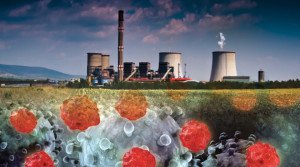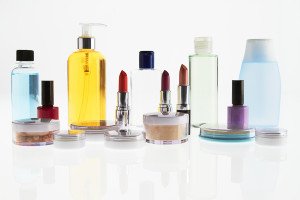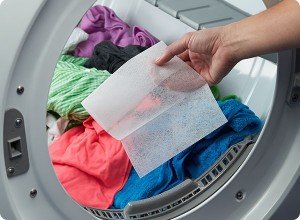Banned For Decades, Dangerous Monsanto Chemical Remains In Thousands Of Schools
3 min read
WASHINGTON – Up to 14 million students in 26,000 U.S. schools could be exposed to unsafe levels of a notorious class of chemicals banned almost 40 years ago, according to a recent study by scientists at the Harvard T.H. Chan School of Public Health.
The chemicals, known as PCBs, are leaching from caulking, sealants, and other aging building materials and fixtures. In a report released Wednesday, Oct. 5, Sen. Edward Markey, D-Mass., analyzed the Harvard findings and calculated that up to 30 percent of American children in elementary, middle and high school may still be exposed to these dangerous industrial chemicals, despite a 1979 ban by the Environmental Protection Agency.
According to EPA data obtained by Markey’s office, which was also analyzed by EWG and America Unites for Kids, in the last decade the EPA has received 286 reports of potential PCB contamination of school buildings in 20 states. These incidents ranged from the removal of a single fluorescent light fixture to large-scale remediation undertaken by some of the nation’s largest school districts.
PCBs, or polychlorinated biphenyls, have been linked to cancer, harm to the immune system, neurological damage, learning deficits, lowered birth weight and decreased thyroid function. Manufactured from the 1920s to the 1970s by Monsanto, PCBs were used as insulators for electrical equipment, oils for hydraulic systems, plasticizers in paints and caulks, components of fluorescent light fixtures and in consumer products such as carbonless copy paper. Not long after Monsanto introduced PCBs, the company discovered they were hazardous, but hid that informationfrom the public and regulators.
Schoolchildren are most often exposed by old, PCB-laden caulk and crumbling fluorescent light fixtures. They may also come in contact with PCBs that leached into soil, or that were incorporated into paints and floor finishes. Any school building constructed between the 1950s and the late 1970s is likely to test positive for PCBs, but the EPA does not currently require such tests.
“PCBs are some of the most toxic and persistent chemicals ever produced,” said Ken Cook, president of EWG, which in a 2005 study found 147 different PCB contaminants in the umbilical cord blood of 10 American newborns. “It’s shocking to find that while they were banned decades ago, millions of kids and other Americans continue to be exposed today.”
Districts grappling with PCBs include the Santa Monica-Malibu Unified School District in Southern California. In response to a lawsuit by the citizens’ group America Unites for Kids, last month a federal judge ordered all PCBs removed from two Malibu schools by 2019.
“The reports by Sen. Markey, EWG and America Unites for Kids confirm what I and many other parents around the country have worried and warned about for years,” said supermodel and spokesperson for the non-profit America Unites for Kids, Cindy Crawford, whose concerns prompted her to pull her two children from Malibu High School.
“Millions of our students are likely spending significant hours each week inside classrooms that expose them to extremely toxic chemicals that could cause serious health problems for them,” Crawford said. “Unfortunately, as these findings show and by our own personal experience in Malibu, the government agencies have very little information or answers for parents and teachers. Schools and classrooms should be healthy places where our kids are safe and able to flourish, not environments that could put them at risk.”
Jennifer deNicola, president of America Unites for Kids, said Markey’s report should be a wake-up call to Congress, the EPA and parents nationwide.
“This is absolutely outrageous,” she said, “and no parent or educator should stand for it. Our government, which requires that children attend school, should also ensure they’re in schools and classrooms free from toxic chemicals like PCBs.”
Dr. Robert Herrick, primary author of the Harvard study, stated:
This data demonstrates that PCBs in schools are a national problem. And while the scope of the problem remains poorly characterized, it is clear that where people look for PCBs in schools, they are very likely to find them. The effect of these PCBs on the health of people in these buildings has never been studied, but given the evidence that PCBs cause cancer, and reproductive and developmental problems, it is essential that this source of PCB exposure be eliminated from our schools.



